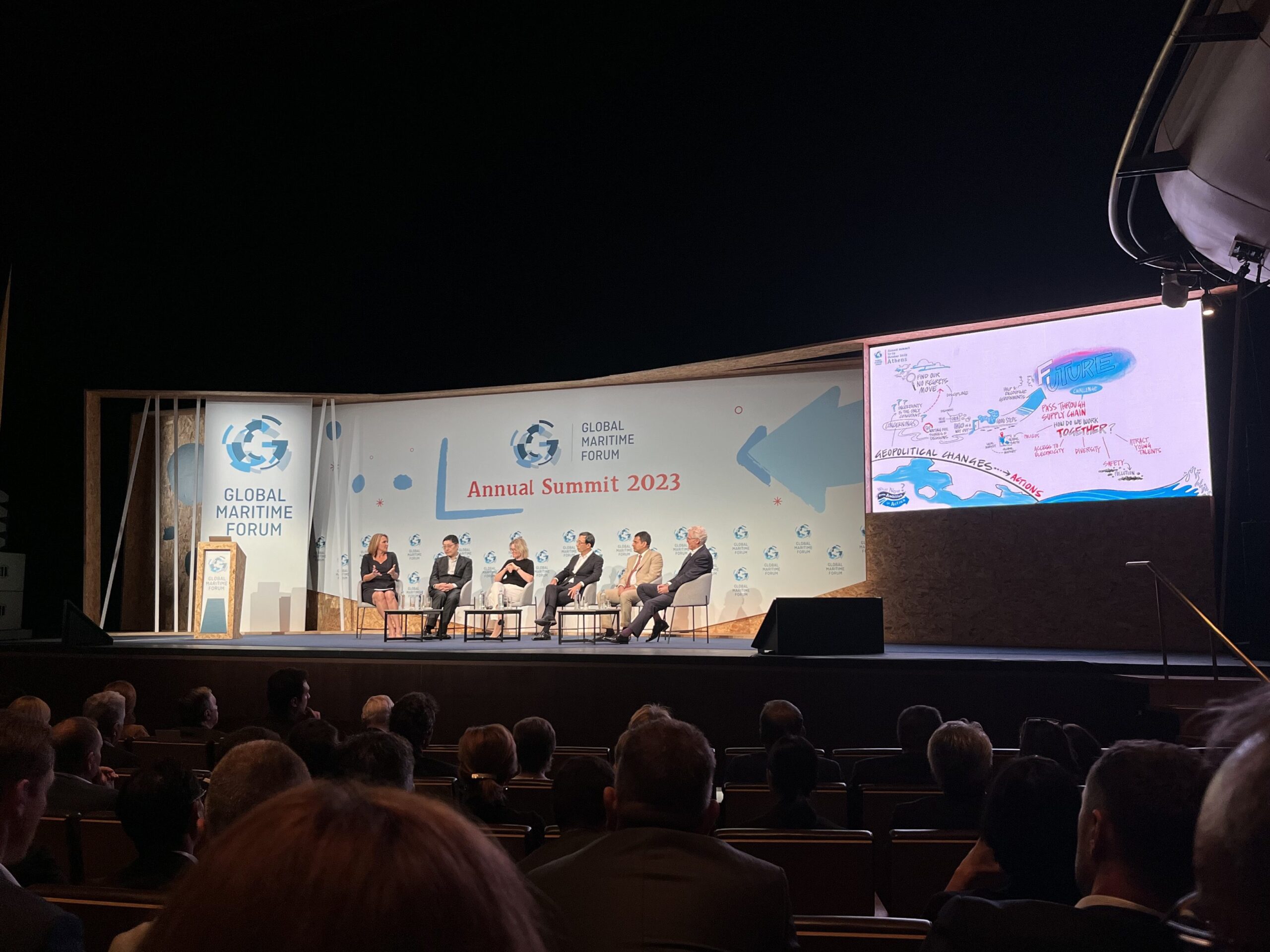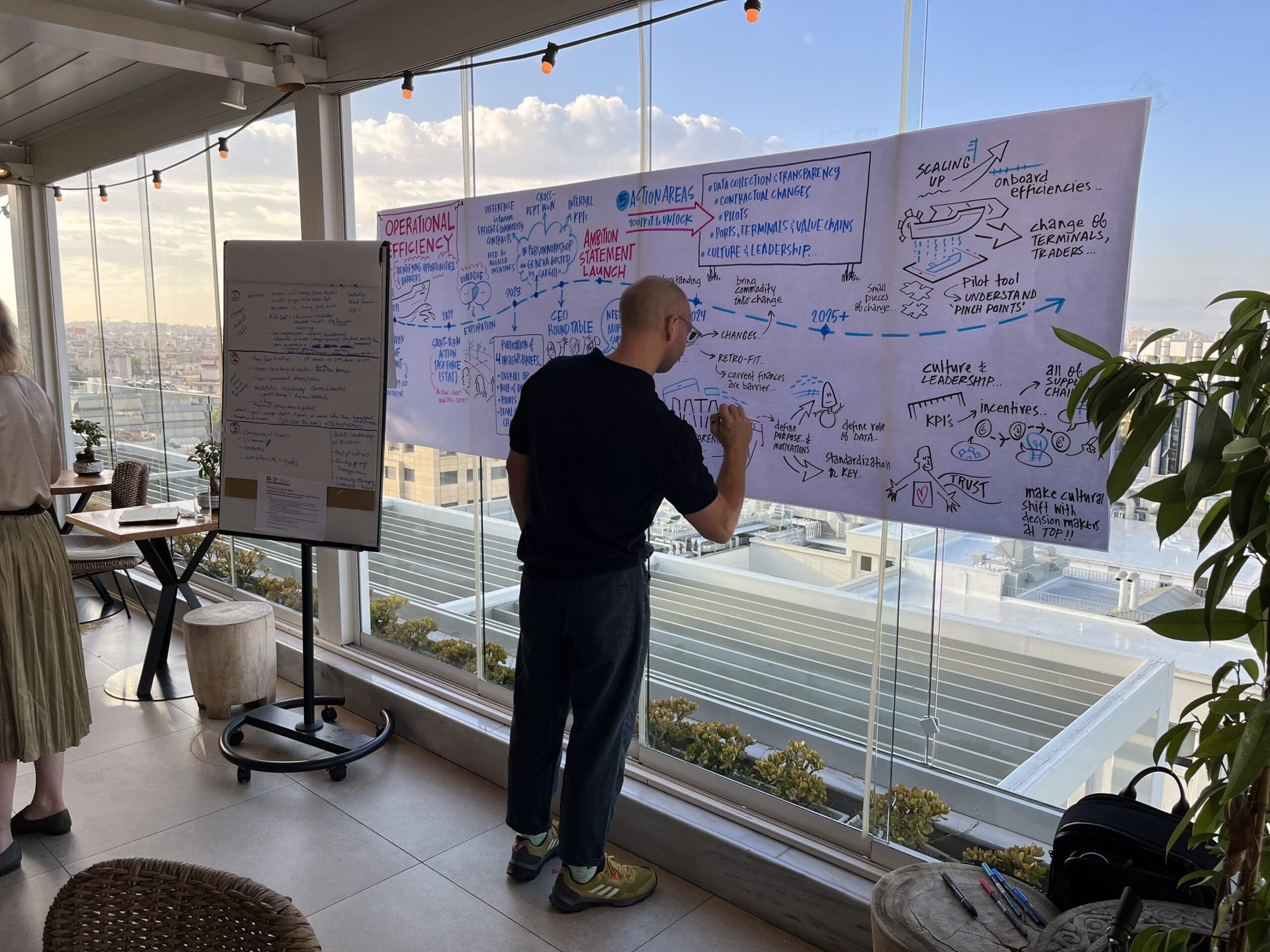October 19, 2023
Five actions to improve operational efficiency in shipping

The Global Maritime Forum’s latest Ambition Statement on Operational Efficiency, of which NAPA is a signatory, outlines five key areas where the shipping industry can act today to substantially reduce its greenhouse gas (GHG) emissions. This is a powerful reminder that much progress on decarbonization can be low-risk, high reward, and high impact – if we change mindsets and make the most of technology that is already available today.
One of the most powerful signals sent by the signatories of the Ambition Statement is that immediate action on maritime decarbonization is both necessary and within reach. The industry’s regulators, investors and end customers, as well as society at large, are all calling for substantial emission reductions to happen this decade. Crucially, solutions to do so already exist: optimizing operational efficiency has the potential to reduce annual fuel costs by 20% while reducing annual emissions by more than 200m tons of CO2, according to a series of Insight Briefs published by the Global Maritime Forum (GMF).
In other words, reducing GHG emissions is not only something that the maritime industry should do – it is also something that shipping can do already, and in a commercially viable way. Investing in efficiency is, therefore, a no-brainer.
However, a critical question that often poses a roadblock is: where do we start? This new Ambition Statement answers this with five concrete focus areas where the industry can act today to rapidly boost its operational efficiency and slash GHG emissions. Together, the 30 signatories have agreed to take collective action in those areas.
Quite remarkably, the bulk of those actions are low-hanging fruit that do not require high capital investments in new engines or alternative fuels, or complex changes in regulation. Rather, the work undertaken by the GMF puts the spotlight on the need for collaboration, visionary leadership, and new mindsets. To succeed, we collectively need to embrace new solutions, contractual frameworks, and ways of working.

What does this look like in practice? Let’s have a closer look at the five opportunities for action identified in the Ambition Statement, with real-life examples.
1. Data collection and transparency
The Ambition Statement calls for a greater use of data to optimize vessels and voyages, but also to enable the transparency and trust required to support the uptake of innovative technologies.
A tangible example is our recent study with Norsepower and Sumitomo Heavy Industries, where we analyzed the emission reduction benefits of combining wind propulsion systems with voyage optimization software. The project found that the combination of the two technologies can reduce GHG emissions by up to 28% on average, bringing more certainty and strengthening the business case for investing in those solutions.
Under the same umbrella, another area with immense potential is enhancing the collection, integration and analysis of onboard data. This enables companies to unlock new operational efficiencies that go beyond fuel optimization and take a more comprehensive approach to daily operations and energy usage optimization. Deploying the NAPA Logbook, for instance, can help the industry kill two birds with one stone – providing a trusted and captain-verified data source for regulatory compliance and ESG reporting to a range of stakeholders, while also offering new avenues for optimizing every aspect of performance, from greenhouse gas emissions to waste management and safety practices on board (read more about it here).
2. Contractual changes
The signatories support the modernization of charterparty contracts to address the “split incentives” problem that incentivizes vessels to “sail fast then wait”, increasing their emissions exponentially only to wait outside ports. The statement highlights that a key avenue for progress is to re-examine contracts so that owners, charterers, shippers and receivers can all share the benefits of a systematic uptake of operational efficiency.
An eminent example is the Blue Visby solution, coordinated by NAPA, which combines an innovative contractual framework and state-of-the-art digital technology to optimize and stagger arrivals for groups of vessels travelling to the same port. Based on extensive analysis using shipping data from 150,000 voyages, it is estimated that the Blue Visby Solution will enable a reduction of about 15% of overall maritime CO2 emissions. A key priority for NAPA will be to continue to support the development of the technological platform that makes this new framework a reality.
3. Pilot projects
The statement emphasizes the importance of pilots to help the industry learn about the practical implications of operational efficiency measures. Pilots are an opportunity to identify best practices, but also obstacles to overcome, and this is why these practical learnings should be shared more broadly.
We see pilot projects cropping up across the industry, trialing technologies as varied as batteries, wind propulsion, carbon capture systems, as well as new engines and fuels. These are ambitious endeavors, but they should not be a leap of faith. With the latest generation of data analysis, digital twins and modelling tools, industry pioneers can virtually test different options and model their impact on the vessel’s safety, performance and operations – giving more clarity and certainty even before pilots begin.
In practice, NAPA does this using a vessel’s “digital twin”, which is the 3D model that was used to design the ship, containing data on its unique structure and characteristics. This enables us to run hyper-realistic operational simulations to not only validate technical viability aspects such as design and stability, but also predict performance and provide a full picture of the operational impact of these installations, including fuel usage, routing, GHG emissions and more – all in a cost-effective way.
4. Ports, terminals and value chains
This highlights the need for a holistic approach and collaboration to achieve greater efficiency across supply chains. Digitalization, arrival sequencing and the use of virtual arrival and notice of readiness can all drive greater optimization not only at sea, but in the critical “first and last mile” of a ship’s journey.
Optimizing the system, not just its individual parts, is critical to reducing a ship’s fuel consumption and GHG emissions throughout its journey, and ultimately make supply chains as efficient and green as possible. This is yet another area where digitalization can be the foundation for progress on decarbonization.
5. Culture and leadership
This is a vital enabler for all operational efficiency actions. To implement changes in practices and contractual frameworks, we need a change in mindsets at all levels within companies, from boards to crews on board. As the Ambition Statement highlights, change management and education are essential components of the decarbonization transition.
Indeed, comprehensive training is a vital enabler of any decarbonization initiative in shipping. Technology alone won’t suffice – we need to ensure that seafarers have the right knowledge and skills to operate new systems safely. NAPA supports this by working with maritime training institutions as well as directly with the industry to facilitate access to advanced training for seafarers and ship operators, both in-person and remotely. For example, we have partnered with the Royal Caribbean Group, CSMART and SIMWAVE to make critical stability training more accessible and convenient. This is delivered on board, in classrooms and via eLearning courses, giving seafarers flexible and convenient options to gain the knowledge they need in today’s fast-evolving technology environment.
We’re all in this together
All these areas for action emphasize just how much can be achieved by the industry itself on the path to decarbonization. It also shows that shipping has plenty of options in its toolkit to embark on the transition with confidence – but much of the challenge will be to think creatively, and to rethink existing assumptions and frameworks to create the business models that will make net-zero work in practice for businesses, here and now.
This is also a key reminder of a fundamental truth in the sustainability journey: without collaboration, there can be no decarbonization.
To read the full GMF Ambition Statement on Operational Efficiency, click here.
